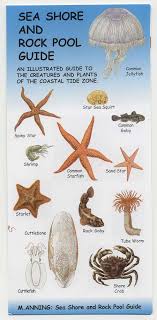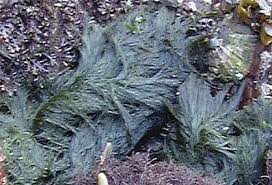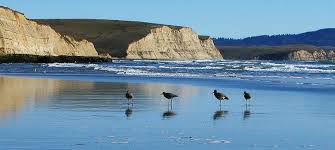Team members
Names / Roles:
- Raeesah (Leader)
- Jolene (Writer)
- Khalidah (Research)
- Farah (Research)
Overview
Brief description of the ecosystem:
This seashore has been described as an interface of dynamic exchanges where land and sea intersect. This research has contributed immensely to our understanding of ecological interactions within this environment. The environment is generally seen to be the biophysical world and the interactions occurring there. The interactions occurring between different living organisms and between the living organisms and the non-living factors that exist within such environments, maintain the balance in these environments. In the marine environment this would include plants and animals that inhabit seashores and physical factors such as tides, wave action, wind, light intensity and so on. These interactions are thought to contribute to maintaining life on earth and contribute towards ecological balance. Threats to this balance, which often lead to degradation of conditions, are called environmental risks or issues.




Where can it be found? Level of human activity? etc
It can be found at marine environment. As environmental issues were probed and the underlying causes of environmental risks were revealed, human understanding of the term environment was broadened. The underlying causes of most environmental issues were traced back to some human activity or another. With this increased understanding and new insights the term environment became constructed as the product of interactions between human activities and the life-supporting biophysical world in which human activities occur. Other dimensions were added to the physical construct environment, namely social, political and economic activities of humans. These activities of humans have an effect on the biophysical environment and the seashore is no exception. Humans have fished and mined the oceans for many years and used coastal waters as dumping grounds for waste.Other human activities included pollution when the seashore become polluted because of the water and dumps float along with them.
Physical Factors
Light, temperature, water, air, pH, mineral salts and salinity
Wind effects
- In the sheltered waters of estuaries and basins, even strong winds only produce 'choppy' waves, as there is not enough fetch to build up big waves. This controls the energy the waves have for erosion, transport and deposition - and mud rather than sand is deposited in areas where the water is shallow and slow-moving enough.Across the open sea, the distance that waves can travel is much greater, they can grow higher and longer and travel faster. The coasts facing the North Sea are exposed to the full force of waves that have the energy to erode, transport and deposit vast quantities of sand.
Wave effects
- As a wave grows, it becomes too high to support itself, and the crest over-balances and forms a mass of foam and spray (surf).
On the shore you can observe two wave types:
pounding or eroding wave - where the main force of the water strikes the shore, usually where there is deep water offshore.
spilling or depositing wave - where it is shallow offshore and the wave spills over gently, the slow speed and friction means the sand being transported carried in the water is dropped.
Classification of Living Organisms
Producers
Consumers
Decomposers
-
Producers- seaweeds and micro-organisms
-
Consumers- scavangers and animal plankton
-
Decomposers- sesarma versicolor





.jpg)
Food Web
Please use Microsoft PowerPoint to create and upload picture.
Food Chain.ppt
Food web.ppt
Interrelationship in Ecosystem
Predator-prey relationship
Parasitism
Mutualism
- Predator-prey relationship
-A predator is an organism that eats another organism. The prey is the organism which the predator eats. Some examples of predator and prey are lion and zebra, bear and fish, and fox and rabbit. The words "predator" and "prey" are almost always used to mean only animals that eat animals, but the same concept also applies to plants: Bear and berry, rabbit and lettuce, grasshopper and leaf.
- Parasitism
- This is a symbiotic relationship between two organisms in which one species (parasite) benefits for growth and reproduction to the harm of the other species (host). It must be emphasized that parasite and host interact and that excessive harm done to a host, which makes it less competitive , also endangers the survival of the parasite species. Parasitism can be differentiated into
- ectoparasites and
- endoparasites
depending respectively, on whether they live on or in the host. Lice, flea, ticks, etc. are examples of ectoparasites. Tape-worms, bilharzia and the malaria parasite are examples of endoparasites.
- Mutualism
- whereby. both organism benefits.
Useful Links
Include the links of websites you took information from.
For example:
Wild World @ nationalgeographic.com ( http://www.nationalgeographic.com/wildworld/terrestrial.html )
- [www.google.com] (http://www.botany.uwc.ac.za/pssa/articles/features/no51.htm)
- [www.google.com] (http://books.google.com.sg/books?id=DbaBQm_ZQkIC&pg=PA26&lpg=PA26&dq=producers+at+seashore&source=bl&ots=-bHpqFgf1u&sig=hVtxiKvOHf-zDA4iy7S0x7vNrxU&hl=en&ei=o6NxSoa6HdCLkAWJ4tGODA&sa=X&oi=book_result&ct=result&resnum=2)
- [www.yahoo.com] (http://www.snh.org.uk/TeachingSpace/whattodo/seashoresand/making_connections.asp)
- [www.google.com] (http://books.google.com.sg/books?id=cMQp7bIZOogC&pg=PA63&lpg=PA63&dq=decomposer+at+seashore&source=bl&ots=B4CZVjz_ou&sig=ooHKhtqkYnwbedinrbWrzToYMGY&hl=en&ei=7LlxSrD-BYn6_Ab5jsDiCg&sa=X&oi=book_result&ct=result&resnum=1)
Comments (5)
1E3 group 5 said
at 11:32 pm on Jul 30, 2009
Hope is correct and is well done... :D
1E3 group 5 said
at 11:32 pm on Jul 30, 2009
By Raeesah:D
Sherlyn Chew said
at 10:28 am on Aug 5, 2009
Really good work. Thank you for the effort. Perhaps you might wanna add more pictures to make it more interesting.
Sherlyn Chew said
at 12:02 pm on Aug 5, 2009
oh and u missed out one inter-relationship on Mutualism. Gotta read up more.. to find out.
1E3 group 5 said
at 10:53 pm on Aug 16, 2009
Oh, okay. Will add more pictures. Have done up on the part of Mutualism.
Jolene.
You don't have permission to comment on this page.